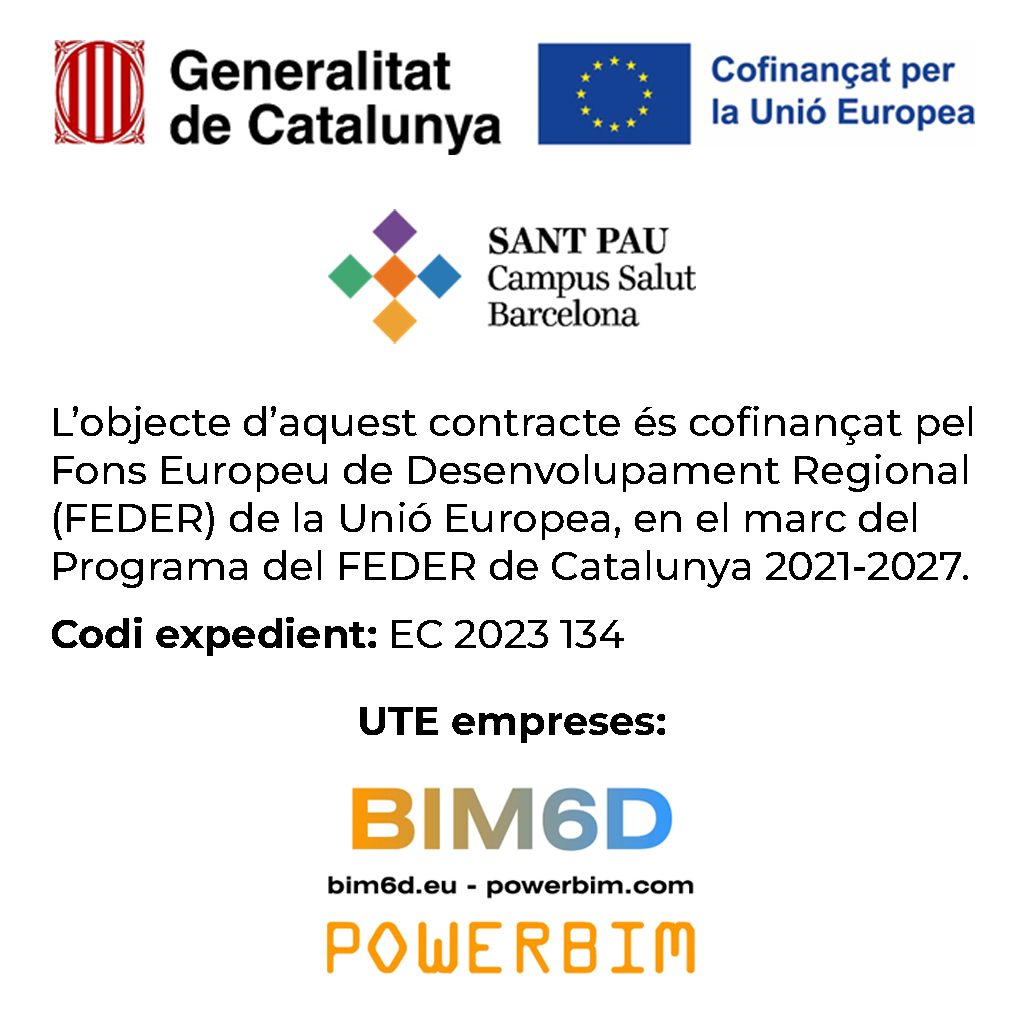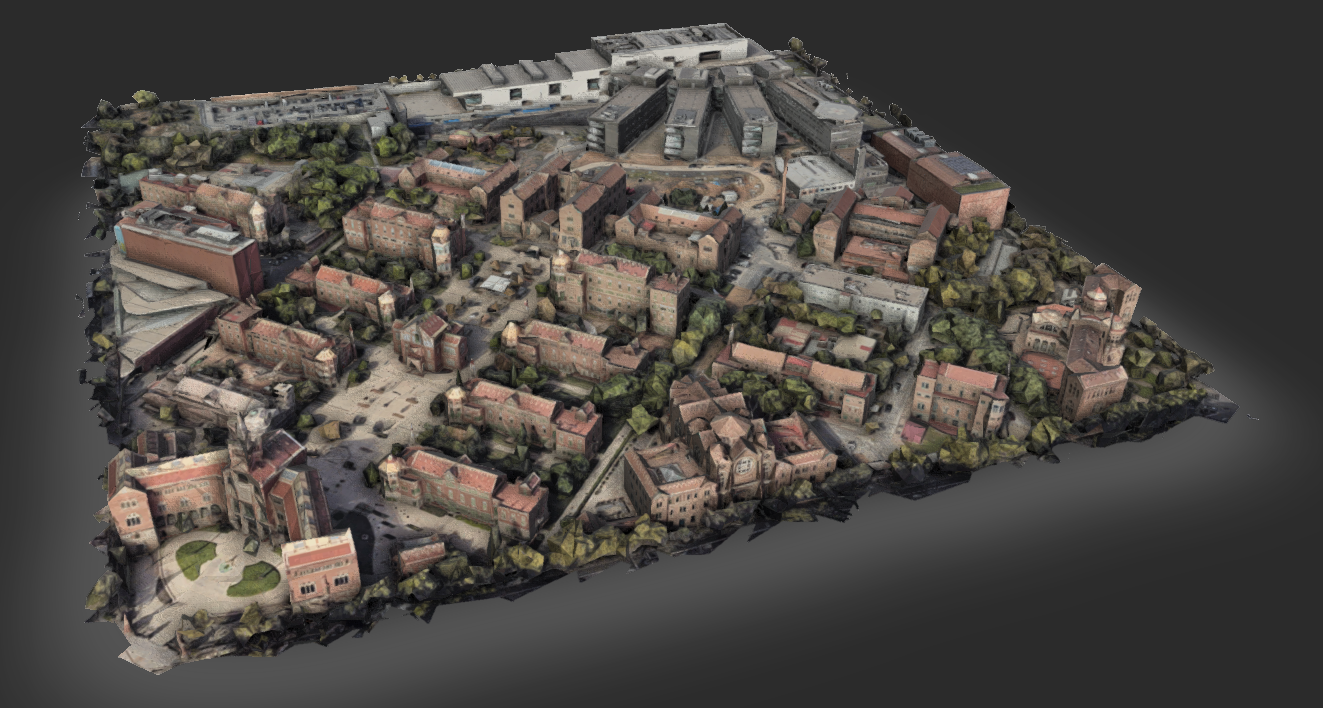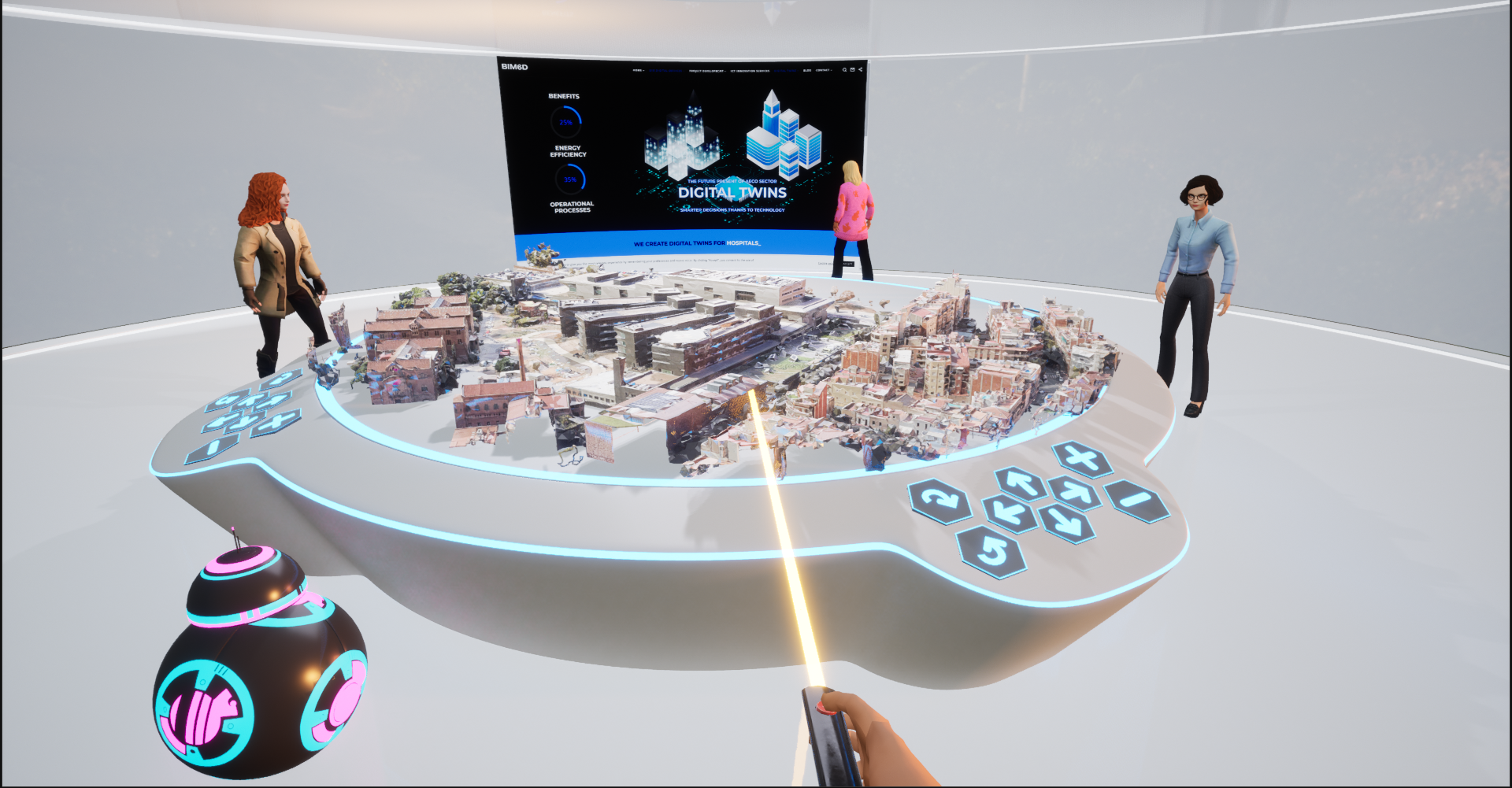
DIGITALTWIN PILOT PROJECT FOR HOSPITAL SANT PAU I SANTA CREU IN BARCELONA
Year: 2024-2025 | Promoters: GOVERNMENT OF CATALUNYA, HOSPITAL SANT PAU / EUROPEAN COMISSION – FEDER
Firms: BIM6D / POWERBIM / Universitat Politecnica Catalunya
PROJECT EXPLANATION
The object of the contract is the development and implementation services, through a pilot test, of digitaltwins for some spaces of the Hospital de la Santa Creu i Sant Pau (the modernist complex of architect Domènech i Montaner and the new Hospital) that allow to validate the viability of the metaverse as a tool for public users for various uses to be scaled.
The Government of Catalunya wants to explore the potential of the metaverse for public uses, especially in spaces that combine cultural and health uses in the Hospital de la Santa Creu i Sant Pau. It seeks to improve decision-making in public policies through the matching between virtual spaces and reality.
The main objectives of the contract are:
1. Explore the use of the metaverse in the public sphere, especially in the simulation of the occupation of spaces and the use of immersive realities in the health sector.
2. Expand the variety of health care spaces and processes in a virtual format to improve the user experience and be able to implement them in other clinical centers.

Digital twins are virtual replicas of objects or processes that simulate the behavior of their real-time counterparts. They are applied in various fields and allow to reproduce, experience and predict situations in the real world. The metaverse is an immersive and multi-sensory experience using immersive technologies.
To respond to this contract, the team formed by the companies BIM6D Consulting & Performance SL, POWERBIM SL and the Universitat Politècnica de Catalunya (inLab FIB unit), with demostrated experience in the development of digitaltwins for buildings and infrastructures, and their integration with metaverse technologies, by starting from the building, its systems and its spaces as assets to be managed, we can work in an integrated way in the two technological use cases (cultural modernist heritage + clinical assistance) proposed by the client.
CLINICAL ASSISTANCE DIGITALTWIN
The clinical assistance use case consists of the development and pilot test of a digital twin of the diagnostic area for the image (care circuit for the patient candidate to perform an interventional radiological procedure), useful for the interventions of diagnostic control with intracranial aneurysm embolization, with two sides: one that will be useful for patients and another for healthcare staff.
GOALS
- Improvement of the user experience integrated in the current circuit: Training of the patient before the control using virtual reality glasses.
- Simulation of the flow of patients in the diagnostic area for imaging: CT scan, two-level and one-level room.
The user of this application is the patient who will undergo the diagnostic check. This check is carried out with the patient awake and the aim of this training is for the patient to become familiar with the environment, being able to visualize the two-level room in 3D, as well as the equipment that is part of this room, together with a complete explanation by the medical team.
Other use case is intended for the healthcare team, radiologists, technicians, nurses and janitors. The objective is that the professionals, by changing different variables can run simulations of the occupation of the area of Diagnostic Imaging. Unlike the patient education application (VR), this application will be offered for use through a web application.



CULTURAL HERITAGE METAVERSE EXPERIENCE
The modernist heritage use case presents two sides, an application aimed at the public to virtually visit certain rooms of the modernist architectural site and another application dedicated to being able to visualize different configurations of distribution, equipment and furniture of these spaces interactively.
GOALS
- Offer a virtual experience equivalent to tourist visits to the modernist site for the public (citizens and foreign visitors) to assess the architectural and cultural quality of the spaces and publicize the events that the site offers.
- Offer an immersive virtual reality tool to be able to show, in a realistic and interactive way, how the different spaces that are rented for events can be configured, so that those interested can understand the different possibilities of these spaces for different types of events.
A website open to the public will be developed for the registration of users who wish to book a virtual visit to the spaces of the modernist site. The way to access the visit will be through a reservation system that will offer visits on specific days and times selectable in a calendar and with limited places, this will be done so that each user who will access the visit will have an avatar of their user.
The other experience of configuring the interior distribution of the spaces is restricted to those users who are responsible for it, so users who have access can download the experience in an application to be run from a local computer and with VR glasses of the interested user.